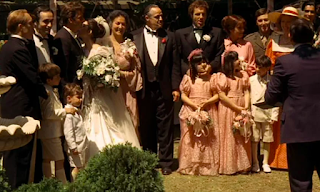The Movie Brats - An Artist's Support
In the late 60s to 80s a new generation of filmmakers was coming of age and entering the workforce.
This one was different from any other. They didn’t enter the practice through theatre, television, or
radio. They grew up with film, and learned it in that way. They had watched films on TV from an early
age, and gone to film school to perfect their craft.
This is the story of four artists that supported each other in an age where everything was changing.
Four artists of wildly different styles in the same medium, that could still inspire and appreciate each
other.
Steven Spielberg, famous director of critical and box
office hits such as Jurassic Park, Jaws, ET, and
Indiana Jones, made his first film at age 12 with his
dad’s film camera in order to get a photography badge
for Boy Scouts. When he was 16, he made a feature
length movie with his friends for a budget of $500,
which it made back when it played for one night at the
local movie theater. He applied to USC but was turned
down. During an editing internship at Universal, he
was given the opportunity to make his own short film.
Martin Scorsese, perhaps the maven of the Modern Crime movie,
was the son of two struggling actors, who both had day jobs to
keep the family afloat. As a young boy, he had asthma and couldn’t
play sports like the other kids, so his older brother would take him
to the movie theater to escape the ridicule and feel a little less
lonely. Little Martin was transfixed with the magic he saw on
screen, and regularly went back to see the same movies.
Second only to the Marvel Cinematic Universe (which has more
than twice as many movies), Star Wars is the highest grossing film
series of all time. It created a community out of sci-fi lovers and
changed the genre forever. However, it’s creator, George Lucas, initially wanted to be a racecar driver. He spent his high school years fixing up cars and hanging out at the garage. This influence
can be seen in the focus the movie's have on how great fast moving vehicles are. However, when he
was 18, he was in an accident where the car flipped, nearly killing him. No longer able to be in the
car, he did the next best thing: he filmed races with a 8 mm film camera. George’s friend John
Plummer introduced him to the avant-garde world in cinema, and the boys spent days and nights
watching all those weird movies.
The Godfather is perhaps the most famous movie of all time. You can see people saying ‘I’ll make you an offer you can’t refuse’ around every corner. It’s director, Francis Ford Coppola, spent much of his childhood in bed as a result of polio. This allowed him to do not much else outside of dream of fantastical scenarios. He was initially interested in theater, but his fascination with technology turned him more to the film side. However, it was not until halfway into a theater degree that he decided to turn completely to film.
The four found themselves crossing paths often: Spielberg and Lucas met in California while
Spielberg was working at the school Lucas attended. Coppola and Scorsese met while both were in
New York. By the time they all entered the professional sphere, they were good friends and, perhaps
more importantly, trusted each other’s opinions.
Lucas was constantly on set during production of The Godfather; Spielberg helped to edit Taxi
Driver; pretty much everyone helped perfect the rough cut of Star Wars.
There’s a story that, after filming had wrapped for the day, Spielberg brought his friends onto the set
of Jaws, his first big commercial movie. He was eager to show them the giant mechanical shark that
everyone had been having so much trouble with, but they’d finally gotten it to work. While Spielberg
was away for a second, Lucas, Scorsese, and Coppola played a little too roughly with the shark, and
broke it. Not willing to get caught, the three future famous filmmakers sprinted off into the night.
These four directors created some of the best films in history, and all went on to legendary careers.
They also inspired countless dreamers in the next generation of filmmaking.




Comments
Post a Comment